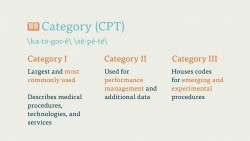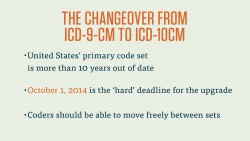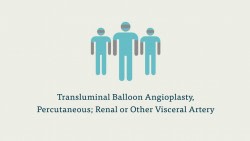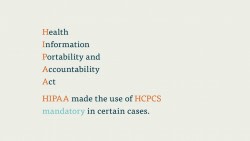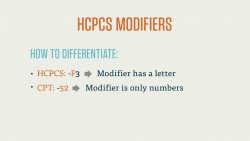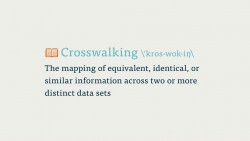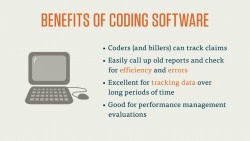How to Use ICD-10-CM
The medical coder should approach ICD-10-CM in the exact same way as ICD-9-CM. The coding process again begins with the analysis and abstraction of a medical report. Using their notes from the report, the coder may go straight to the tabular section or may refer to the alphabetic section to find the correct code, and then confirm it in the tabular.
Let’s take a look at an example.
Patient is 44-year-old Caucasian male. Self reported height and weight 1.8m and 80 kg. No notable medical history.
Patient presents with a red rash around the nose and labial folds. Some yellowish-reddish pimples. Patient complains of itching and flaking skin. Patient says rash emerged two months ago but then subsided. Diagnosed patient with suborrheic dermatitis and prescribed a topical antifungal medication.
In order to code this relatively straightforward visit, the coder would first abstract the information in the doctor’s report. The patient shows one very specific symptom (a rash on the face), and the doctor is able to make a positive diagnosis: suborrheic dermatitis.
The coder could look this up in the alphabetic index, or turn to the section in the tabular index for diseases of the skin or subcutaneous tissue: L00-L99. From there the coder would look for dermatitis and eczema and find L21: “seborrheic dermatitis.”
Underneath that category we’d find four subcategories. We’d select the one that best describes the condition diagnosed by the physician, which in this case would be L21.9, “Seborrheic dermatitis, unspecified.” We use “unspecified” here because the other codes for seborrheic dermatitis pertain either to infants or describe an “other” serborrheic dermatitis. In this case, “unspecified” is our best option.
Let’s look at the tree of codes for this diagnosis code.
L00-L99 – Diseases of the skin and subcutaneous tissue
-
L21 – Seborrheic Dermatitis
- L21.0 – Seborrhea capitis
- L21.1 – Seborrheic infantile dermatitis
- L21.8 – Other seborrheic dermatitis
- L21.9 – Seborrheic dermatitis, unspecified
You’ll note that this ICD-10-CM code doesn’t have any subclassifications or extensions. Remember, not all codes need to go to the level of specificity that ICD-10-CM provides. In this case, the fourth digit is all that’s needed to describe the diagnosis.
Further Explorations
Let’s look at another example, this time an injury. Injuries often have extensions that document the encounter because the stage of treatment (whether it has not been treated, as in an initial encounter, or has already received treatment, as in a subsequent encounter) can greatly impact the medical necessity on a claim.
“Patient presents with bruising and a swollen nose and cheek after contact in a rugby match. Patient has not lost consciousness. Examination shows no rupture of the skin on the face. X-rays confirm a type II Le Fort fracture [a Le Fort fracture is one of three fractures of the bones in the face, including fractures the lower and mid maxillary bones and the zygomatic arch/cheek bone].”
We know right off the bat that this is an injury code, so we can start searching in the ICD-10-CM injury codes, found in S00-T88: “Injury, poisoning and certain other consequences of external causes.” From there we’d winnow our search to S00- S09, “Injuries to the head.”
Within that subfield of codes, we’d find S02, “fracture of the skull and facial bones.” We could also go about this by looking up a Le Fort fracture in the alphabetic index. As mentioned in the note above, a Le Fort fracture can be one of three fractures to the facial bones and skull. According to the medical report, we’re looking for a Type II Le Fort fracture.
Below S02, we’d find a number of subcategories, including codes for fractures of the vault and base of the skull, fractures of the nasal bones, and fractures of the orbital floor. We’re looking for a very specific type of fracture, however, one that involves the maxillary and zygoma bones of the face. Thankfully, there’s a specific subcategory for this: S02.4, “fracture of the malar, maxillary and zygoma bones.”
Once in this subcategory, we’d find a subclassification for Le Fort fractures (S02.4), and then three more subclassifications for each type of Le Fort fracture (S02.41). We’d select the code for our Type II Le Fort fracture: S02.412. Since this is the doctor’s first encounter with this injury, we’d use the initial encounter extension ‘A,’ and would end up with: S02.412A, “Le Fort type II fracture, closed, initial encounter.”
Now let’s look at the code tree to see how we got there.
S00-T88 – Injuries, poisonings and certain other consequences of external causes
- S02 – Fracture of skull and facial bones
- S02.0 – Fracture of vault of skull
- S02.1 – Fracture of base of skull
- S02.2 – Fracture of nasal bones
- …
- S02.4 – Fracture of malar, maxillary and zygoma bones
- S02.40 – Fracture of malar, maxillary and zygoma bones, unspecified
-
S02.41 – Le Fort fracture
- S02.411 Le Fort I fracture
-
S02.412 Le Fort II fracture
- S02.412A – … initial encounter for closed fracture
- S02.412B – … initial encounter for open fracture
- S02.412D – … subsequent encounter for fracture with routine healing
- Etc.
As you can see, navigating ICD-10-CM is both similar to and different from using ICD-9-CM. Because ICD-10-CM provides a much higher number of specific codes, coders must be more accurate when reading and abstracting medical reports. ICD-10-CM, for instance, includes laterality in the code set—that is, what side the disease or injury occurs on. Information like this will be in the medical report, and so it’s simply up to the coder to get every last bit of pertinent information from the medical report.
Conventions
Like ICD-9-CM, ICD-10-CM makes use of a number of conventions that help guide the coder to correct diagnosis codes. Most of these conventions, as we mentioned in the last course, are the same in both code sets, and so we won’t rehash them here. ICD-10-CM does have one significant upgrade, however, and it comes in the “Excludes” convention.
ICD-10-CM’s Excludes notes have been divided into two ‘levels.’ Excludes1 informs coders that the codes listed in the note may not, in any circumstance, be listed with the code that contains the Excludes1 note. For example, you might find something that looks like this:
- A12 {Disease} A
-
Excludes1
- {disease} B, {disease} C
-
Excludes1
The conditions listed in an Excludes1 note are mutually exclusive with the main condition the coder is looking up. An Excludes1 note informs the coder that if the code they are looking up is in the Excludes1 note, the coder cannot, under any circumstances, use the code that houses the note. That is, if a medical coder is looking for {disease} B, but thinks the code for {disease} A would be appropriate, the Excludes1 note would direct her to look elsewhere besides {disease} A.
Excludes2 is the other new Excludes note. An Excludes2 note indicates that the code above the note does not include the other conditions listed below the note. Let’s take another look at our simplified example.
- A12 {Disease} D
-
Excludes2
- {disease} E, {disease} F
-
Excludes2
This Excludes2 note means that while Diseases E and F might be pertinent to or related to Disease D, they’re not found in the same code as Disease D. Unlike Excludes1, you can code conditions found in an Excludes2 note with the condition above the note. You can think of Excludes2 as sort of like “See Also,” while an Excludes1 note is more like a “See” note.
The upgrade from ICD-9-CM to ICD-10-CM is set for October 1, 2015. In the meantime, coders across the country are learning how to use this new large code set. We’ll cover that process, and the process of transitioning codes from ICD-9-CM to ICD-10-CM, in Course 2-13. For now, we’re going to move on to procedure codes.
In the next few courses, we’ll introduce you to CPT codes, HCPCS codes, and their modifiers. These codes, along with the ICD codes you’ve just learned about, make up the heart of the medical coding profession.


